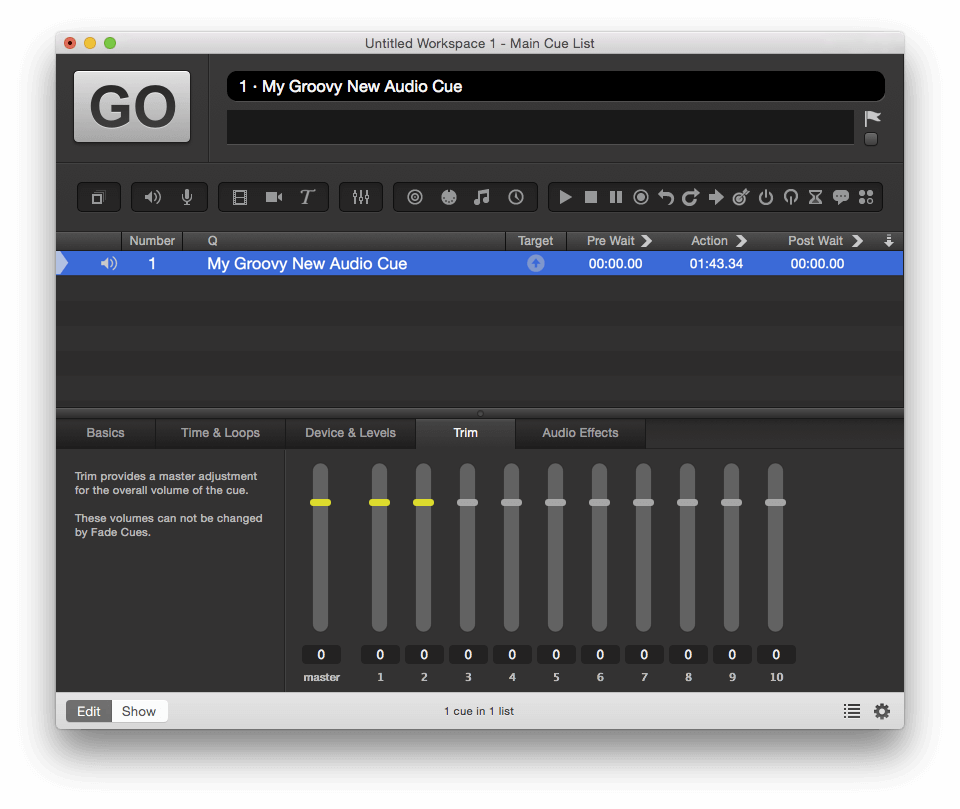
If a target audio file is assigned, this field shows the path to that file. The I/O tab lets you assign a target audio file and audio output patch, and view details about them as well.įile Target. When an Audio cue is selected, the inspector shows the Basics tab and Triggers tab, used by all cues, as well as the following tabs: The I/O Tab If you are trying to squeeze every available drop of performance out of your system, you can convert all your audio to the same sample rate and bit depth as your output hardware is using. This on-the-fly conversion is a very efficient process and in most situations you will not need to concern yourself with the matter. This means that you do not need to choose a single sample rate and bit depth to work with workspaces can target audio files of various rates and depths, and you can use audio outputs with various rates and depths.

Through the low-level audio frameworks built into macOS, QLab automatically and seamlessly performs any necessary sample rate and bit depth conversion on the fly to match the requirements of the audio output patch. QLab supports audio files targets at any sample rate from 8 kHz up to 192 kHz, and any bit depth from 8-bit up to 32-bit 3. QLab can target multichannel audio files and will recognize the first 24 channels in an audio file 2. Without getting too far into the technical weeds, AIFF, WAV, and CAF files will give you the best audio quality and the least technical trouble and those are the formats that we recommend most highly.

For this reason, and also because they usually don’t sound very good, we do not recommend using them unless you are certain that their limitations are not relevant to your show.Īudio cues can also target any file type supported by Video cues the audio portion of the file will be used and the video portion of the file will be ignored. This makes exact timing impossible when using MP3 files. QLab also supports MP3 files, by their very design they incur a variable and unpredictable delay when decoding and playback begins.
#Qlab sound cue mp4#
MP4 - MPEG-4 part 14 container format (which is usually just an AAC audio file wearing a different set of clothes.).AIFF - the Audio Interchange File Format.

Audio FilesĪudio cues may target any file type supported by Core Audio (Apple’s audio framework), but we recommend the following types: Audio cues must have a file target, which is a sound file on your computer, and an audio output patch, which connects QLab to a sound output destination such as your computers’ speakers or headphone jack, an audio interface, or a network-based output such as Dante, AVB, or NDI. Audio cues allow you to play sound files with precise control over timing, levels, and routing.


 0 kommentar(er)
0 kommentar(er)
